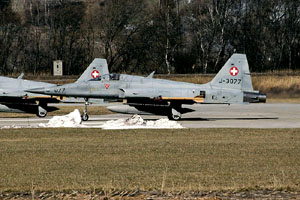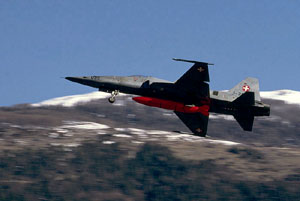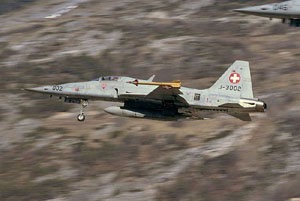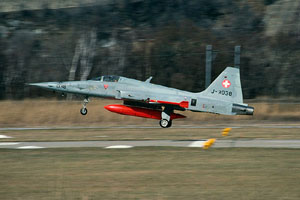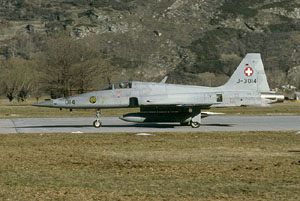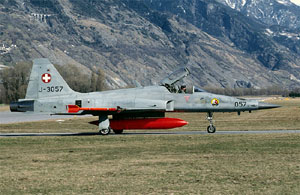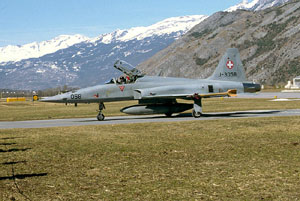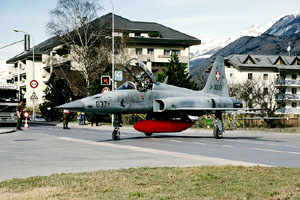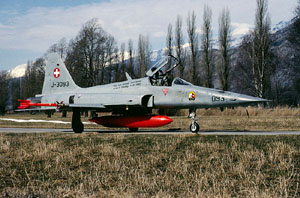|
Bye Bye Airbase
Turtmann
It must have been an amazing
sight for the unprepared tourists, on their way through the Rhone
valley from Montreux to Simplon. Entering the village of Turtmann, a
traffic light would show red. Expecting another car to cross
the road, the motorist had to give way to a jet fighter making it's way
across the street. Such a thing is, or rather was, quite usual for the
inhabitants of the Swiss village of Turtmann, in the canton of Vallis.
The peacetime Swiss Air
Force only has a limited number of airbases for fast jet operations.
In wartime, and particularly
during the years of the Cold War, a large number of reserve bases would
have been
activated to disperse the fighters throughout the country. Personnell-wise,
the Swiss Armed Forces have always heavily depended on reservists. This
includes fighter pilots. These reservists have to train regularly. This is
done during a so-called WK or Wiederholungskurs (Rehearsel Course).
During such a Rehearsal Course, some of the reserve airfields, reserve
squadrons and reserve personell would be activated for a two-week period.
The withdrawal of the Hawker Hunter during the early nineties removed the need
for many of the reserve airfields, however.
The last of the reserve fast jet bases to be activated during
these twice annual exercises was Turtmann. This base, only active during two fourteen
day periods each year, played host to it's usual visiting squadrons,
Fliegerstaffel 1 and Fliegerstaffel 6. Flst 1 based at Payerne is a
professional unit, whereas Flst 6 is made up of reservists. Apart from the
pilots, reservist groundcrew attached to Flugplatz Abteilung 3 (Airfield
Section 3) were trained in their respective trades. The way Air Base
Turtmann has been constructed makes it peculiar compared to NATO air bases.
However, for the Swiss it is not unusual. The east-west runway runs along
the Rhone river. To it's south there is the village of Turtmann. To the
south of the village, aircraft shelters have been carved out in the
southern valley wall. These are the so called Kavernen (caverns). In order
to reach the runway from the caverns and vice versa the aircraft have to
taxi right through the village.
Below you will find some
pictures taken during the last exercise at a unique airfield which at the
time of writing is no longer an air base anymore, for Turtmann
officially closed for flying on Friday 14 March 2003. Apart from this,
Fliegerstaffel 1 as well as Flugplatzabteilung 3 will disband. The
pictures below were all made between 10 and 12 March 2003.
All pictures (c) Hans Rolink.
|
